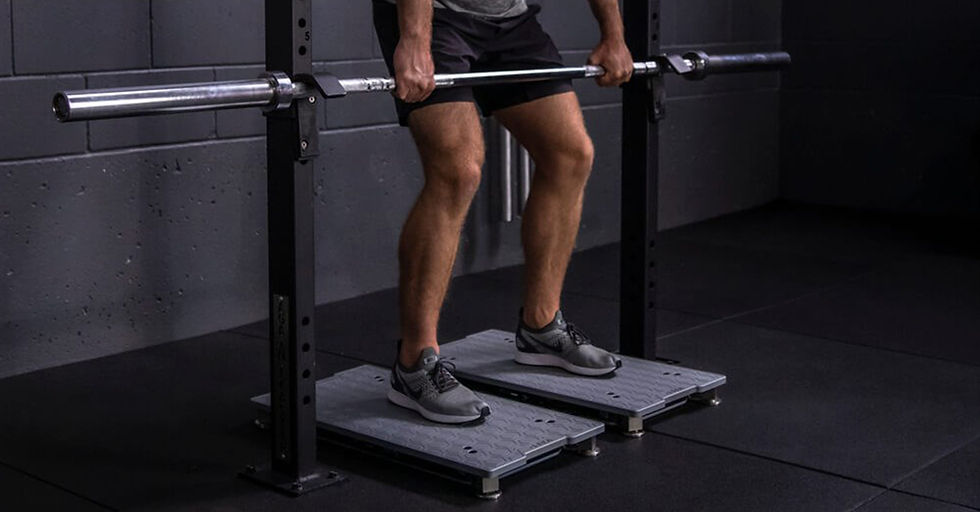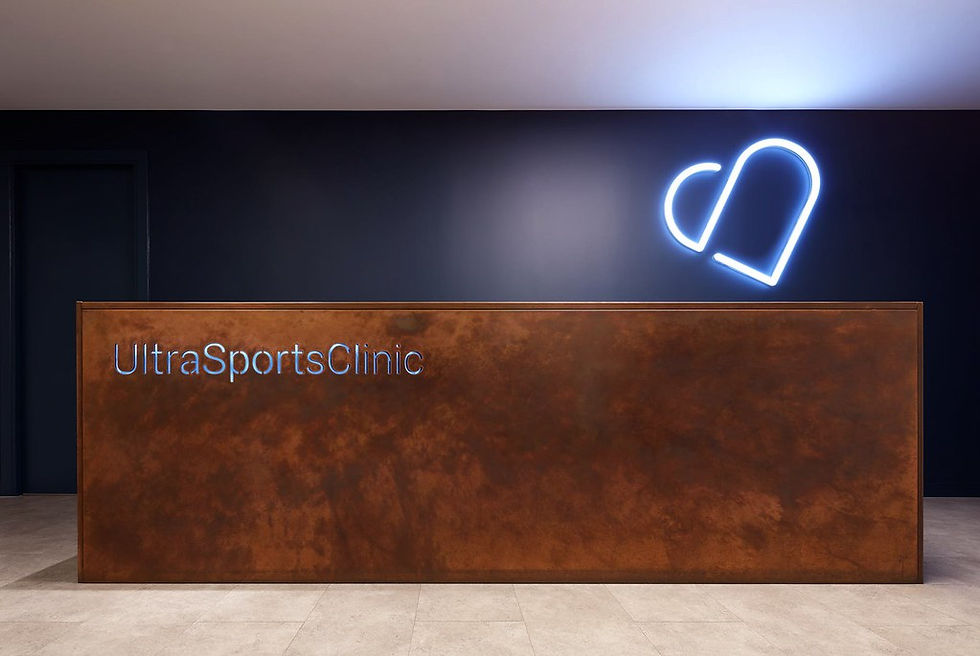The Use of Technology in Modern Physiotherapy
- Ultra Sports

- 3 days ago
- 4 min read

Physiotherapy is changing. It’s not so much its aims, which remain the same: the restoration of mobility, the reduction of pain, and the improvement of function for patients. But rather the methods deployed to do that. While manual manipulation and movement exercises are still important, technology is opening up more innovative treatment paths. We’re seeing advanced diagnostic platforms, wearable sensors, and lower-impact recovery tools. And they’re not just available in elite sports centres, but physiotherapy clinics across the UK. So, how might technology influence your treatment next time you seek physiotherapy in London?
Key Takeaways
Technology is revolutionising physiotherapy, enabling more accurate assessments, personalised treatment plans, and faster recovery.
VALD ForceDecks provide precise, real-time biomechanical data, helping therapists assess strength, balance, and injury risk with objective metrics.
Shockwave therapy is an effective, non-invasive treatment for chronic tendon and soft tissue injuries, now widely used in physiotherapy clinics across London.
Electrical Muscle Stimulation (EMS) helps rebuild and activate muscles post-injury or surgery, and supports neuromuscular re-education.
Blood Flow Restriction (BFR) training allows for strength gains with low load, ideal for rehab patients and those unable to lift heavy weights.
Wearables and mobile rehab apps improve patient engagement, compliance, and progress tracking outside the clinic.
Clinics offering physiotherapy in London are integrating these tools to deliver smarter, faster, and more effective care.
The combination of human expertise and tech tools is creating a new standard in physiotherapy.
Bringing in A New Era of Technology in Physiotherapy
The digital revolution in physiotherapy
In little over a decade, physiotherapy clinics have almost completely changed the way they work. As well as observation and manual palpation, physios now have access to a range of new tech tools to improve the efficiency and effectiveness of clinical assessments. Each new tool benefits both therapists and patients, improving:
Accuracy of assessments
Objectivity in progress tracking
Personalisation of rehabilitation plans
And engagement and motivation for patients
So, what is the tech supporting all this change?
The tools and technologies changing contemporary physiotherapy
VALD ForceDecks

VALD ForceDecks are precise, data-driven assessment tools designed to provide insights into strength, balance, and neuromuscular control. So, if you're assessing post-injury progress, identifying movement imbalances, or tailoring strength training plans, VALD ForceDecks can provide real-time feedback that will enable your physiotherapist to track even subtle changes in force production and symmetry.
In high-performance settings and physiotherapy clinics in London, VALD ForceDecks are becoming a gold standard. Some key benefits include:
Detailed analysis of jump testing, balance, and landing mechanics
Post-surgical rehab metrics, such as anterior cruciate ligament (ACL) reconstruction
Early detection of asymmetries that could lead to injury
Motivation through visual feedback for patients
Shockwave therapy

Another technology making waves (literally) in physiotherapy practices is shockwave therapy. Shockwave therapy uses high-energy sound waves to stimulate healing in soft tissues, tendons, and bones. Which makes it especially useful in treating chronic conditions, such as:
Plantar fasciitis
Tennis or golfer’s elbow
Achilles tendinopathy
Calcific shoulder tendinopathy
And hip bursitis.
The mechanical waves help increase blood flow, reduce pain, and accelerate tissue regeneration.
Clinics offering shockwave therapy in London have been reporting significant success, especially in patients who’ve had limited results from traditional methods. Which is great, because it’s reducing the reliance on more invasive options and long-term use of pain medications. Not so long ago, this treatment was reserved for elite sports medicine, but you can now find it leading physio practices across London.
Electrical Muscle Stimulation (EMS)

Electrical Muscle Stimulation (EMS) has long been used in elite athlete recovery, but its applications in general rehab are now being more widely embraced. It's a technology focused on muscle activation, not pain relief (which is the primary goal of a TENS machine). EMS involves applying small electrical impulses to muscles to cause involuntary contractions. This helps:
Stimulate muscle growth and prevent atrophy (wastage), especially post-surgery.
Activate and re-educate key muscles. A common example is post-ACL surgery, where EMS assists with the recruitment of the VMO (vastus medialis obliquus) and the quadriceps.
Support neuromuscular re-education (e.g., after nerve damage or disuse).
Improve circulation and aid recovery.
This makes it highly beneficial in post-operative scenarios where initiating muscle contraction is difficult. It’s also popular for use in injury prevention in high-risk areas, such as the hamstrings or rotator cuff. Many EMS devices are portable too, so when connected to one, they can help patients to continue part of their treatment at home, speeding up recovery.
Blood Flow Restriction (BFR) Training
Blood Flow Restriction (BFR) training is another new tool in the physiotherapy arsenal. BFR involves using a cuff or band to restrict venous blood flow out of a limb while maintaining arterial flow in. When combined with low-load strength exercises, it creates the effect of high-intensity training without putting undue strain on joints and tissues. There are all kinds of applications for this, but it’s particularly useful for post-surgical rehab, elderly patients needing to build strength without heavy lifting, and athletes recovering from injury.
BFR training works by tricking the body into thinking it’s working harder than it is, which can lead to greater muscle recruitment and building with lower training loads. And when used with tools like VALD ForceDecks, therapists can closely monitor the effects of BFR and adjust protocols for optimal results.
Wearables and mobile apps
Technology is also helping patients to continue their treatment plans at home. The growing use of wearable tech, like smartwatches, fitness bands, and motion sensors, as well as physiotherapy-related apps, helps patients in a range of different ways, including:
Accurate home exercise tracking
Better patient adherence
Real-time feedback on movement quality
Gamified rehab that keeps patients motivated
The future of physiotherapy and tech
Physiotherapy is no longer only about human expertise. By augmenting that knowledge and experience with technology – data, sensors, and smart tools – physiotherapists can do more to help patients recover faster and achieve better long-term outcomes.
Technology is not here to replace the skilled hands and clinical judgement of physiotherapists. It’s here to enhance it. That’s why the best clinics are now blending traditional patient care with the power of cutting-edge tools. The ultimate aim being to enhance the standards of care while offering more precise, data-driven, and personalised pathways to healing.
So, whether you’re recovering from an injury, managing a chronic condition, or looking to optimise performance, modern physiotherapy – powered by technology – has never been more effective or exciting.
Are you looking for physiotherapy in London? Get in touch with Ultra Sports Clinic.



Comments